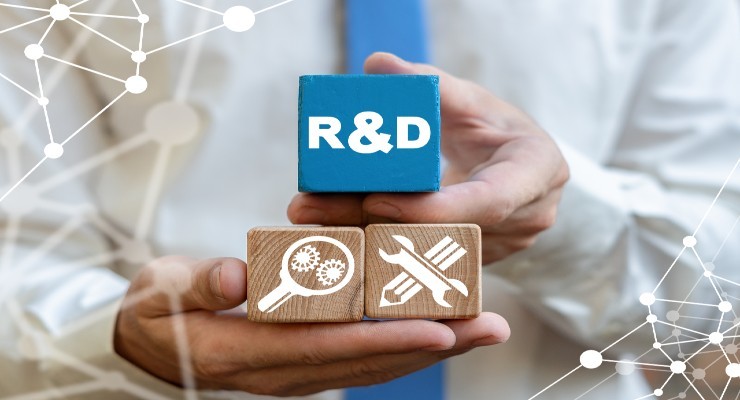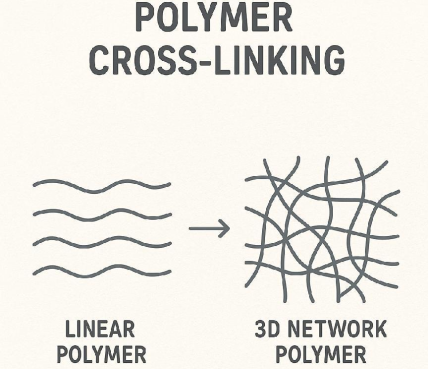Research on the Current Status and Development Trends of UV Inkjet Technology(PART I)
Release time:
2025-07-20
Introduction
UV inkjet technology, as a cutting-edge digital printing technology, utilizes the energy of specific wavelengths of ultraviolet light to instantly cure liquid UV ink on the surface of a substrate, enabling on-demand, non-contact printing of images and text. Compared to traditional printing methods, UV inkjet technology demonstrates strong growth momentum in various fields such as advertising production, packaging, industrial product manufacturing, and decorative building materials, thanks to its efficiency, environmental friendliness, wide material adaptability, and excellent print quality. It has not only promoted the digital transformation of the printing industry but also opened up new possibilities for personalized customization and small-batch production. This report aims to deeply analyze the core principles, significant features, current technical and market challenges of UV inkjet technology, and its future development direction.
Part One: Principles of UV Inkjet Technology: A Deep Analysis of Materials Science
The core driving force behind UV inkjet technology lies in its unique material science foundation, particularly the sophisticated formulation of UV-curable inks, their excellent interaction with diverse substrates, and efficient photochemical cross-linking and curing mechanisms.
1. UV Inkjet Ink Formulation Science
UV inkjet ink is a complex chemical system whose main components work synergistically to achieve precise jetting, rapid curing, and excellent final performance. The core components include:
Oligomers: These are typically acrylate-modified resins with molecular weights between monomers and high molecular polymers. They form the main backbone of the cured ink film, providing its basic physicochemical properties such as flexibility, hardness, chemical resistance, and initial adhesion to the substrate.
Reactive Diluents (Monomers): Low molecular weight acrylate compounds whose primary function is to adjust ink viscosity to a range suitable for inkjet printheads (usually 5-25 cP at room temperature), ensuring smooth ink droplet ejection. Simultaneously, monomers also participate in the photocuring reaction, affecting curing speed, cross-linking density, and the final ink film's hardness, flexibility, and adhesion.
Photoinitiators: The core of UV inkjet inks, these substances absorb specific wavelengths of UV light energy and convert it into chemical energy, generating active free radicals or cations that initiate the polymerization and cross-linking reactions of monomers and oligomers. Their type, concentration, and the match between their absorption spectrum and the UV light source's emission spectrum directly influence the ink's curing efficiency, depth, and surface tackiness. Typically, formulations contain 5-15% photoinitiators.
Pigments/Dyes: These provide the ink with color. Pigments are widely used due to their excellent weather fastness and lightfastness, and need to be ground to sub-micron levels and maintain good dispersion stability to prevent printhead clogging and ensure print quality.
Additives: Chemical substances added in small amounts to significantly improve specific ink properties, such as leveling agents, defoamers, adhesion promoters, stabilizers, wetting agents, etc.
The formulation design of UV inkjet inks faces challenges, requiring an optimal balance between low viscosity, high reactivity, excellent substrate adhesion, good storage stability, ideal ink film performance, and cost-effectiveness.
2. Substrate Adaptability and Interface Science
One of the significant advantages of UV inkjet technology is its wide substrate adaptability, allowing printing on almost any type of material surface, including absorbent substrates (such as paper, fabric) and non-absorbent substrates (such as plastics, glass, metal, wood, leather, ceramics, etc.).
The interaction between ink droplets and the substrate surface is crucial for determining print quality. Ideally, ink droplets should spread appropriately on the substrate surface to form uniform dots and have good adhesion to the substrate. However, on certain difficult-to-adhere substrates (e.g., low surface energy plastics, smooth glass, or metal), UV inks may experience insufficient adhesion and poor scratch resistance. To improve adhesion, the following strategies are commonly employed:
Substrate Surface Pre-treatment: Modifying the substrate surface properties through physical or chemical methods, such as corona treatment, plasma treatment, flame treatment, chemical primer coating, etc., to increase surface energy, increase surface roughness, or introduce active functional groups.
Optimizing Ink Formulation: Adding special adhesion promoters to the ink, or selecting monomers and oligomers with good affinity for specific substrates. For example, DCPA can provide excellent adhesion to difficult-to-bond substrates like PC, PMMA, and ABS.
3. UV Curing and Cross-linking Mechanism
UV curing is the core step in UV inkjet technology, a rapid photochemical reaction process that transforms liquid ink into a tough, solid ink film. The basic process includes:
Light Absorption: Photoinitiators absorb UV light energy at specific wavelengths (usually in the 200-450nm range).
Initiation: The excited photoinitiators, upon absorbing energy, cleave to produce highly active free radicals or cations.
Chain Growth: The active free radicals or cations attack the unsaturated double bonds in monomer and oligomer molecules, initiating a chain polymerization reaction.
Cross-linked Network Formation: Multifunctional monomers and oligomers cause cross-linking between molecular chains, forming a highly branched three-dimensional polymeric network structure that imparts hardness, chemical resistance, and abrasion resistance to the ink film.
Key factors influencing curing efficiency include: UV light source (type, emission spectrum, light intensity, irradiation time), ink characteristics (color, ink layer thickness, type and concentration of photoinitiator) , and the
oxygen inhibition effect (oxygen in the air inhibits surface curing). Methods to overcome oxygen inhibition include curing under inert atmosphere, increasing photoinitiator concentration, using amine synergists, increasing UV light intensity, or employing specific photoinitiator systems that are less susceptible to oxygen inhibition.
During UV curing, a certain degree of volumetric shrinkage occurs, which can lead to internal stress in the ink film, affecting adhesion and printing accuracy. Choosing low-shrinkage monomers (such as certain DCPD acrylate monomers) and optimizing the formulation are common methods to reduce the impact of curing shrinkage.
Part Two: Characteristics of UV Inkjet Technology: A Multi-Dimensional Advantage Analysis
UV inkjet technology, due to its unique working principle, exhibits significant advantages in environmental performance, production efficiency, and application breadth.
1. Environmental Performance: A Practitioner of Green Printing
Low VOC Emissions: UV-curable inks have extremely high solid content, close to 100%, containing almost no organic solvents (VOCs), significantly reducing air pollution and improving the working environment.
High Energy Efficiency: UV curing is instantaneous, eliminating the need for traditional heat drying, greatly reducing energy consumption. Especially, LED-UV curing technology offers higher energy conversion efficiency, longer light source lifespan, lower heat generation, and produces no ozone.
Promotes Sustainable Development: Low VOC emissions and energy consumption help reduce carbon footprint. Simultaneously, it drives the development of low-odor, non-toxic, and even biodegradable or easily recyclable UV ink products.
2. Production Efficiency: High-Speed and High-Precision Manufacturing Power
Rapid Curing Capability: UV inks instantly cure and dry, allowing products to be immediately processed further, greatly shortening the production cycle.
High-Precision Print Quality: As a digital printing technology, it achieves high-resolution printing by precisely controlling ink droplets; some equipment can reach 1440 dpi or higher, producing vibrant colors, and ink films that are wear-resistant, scratch-resistant, and waterproof.
Flexible and Efficient Production Evaluation: No plate-making is required, making it suitable for short-run printing, sample production, and personalized customization. Production task switching is flexible and fast, enabling "print one piece". With technological advancements, it is also gradually applied to medium and high-speed industrial batch production, facilitating intelligent production lines.
3. Comparison of Application Fields: Wide Adaptability in Diverse Scenarios
UV inkjet technology has been widely applied in numerous industries:
Advertising and Signage Industry: Used for producing outdoor billboards, lightboxes, car wraps, acrylic signs, etc., with excellent weather resistance and long-lasting vibrant colors after ink curing.
Packaging Printing Industry: Can directly print on various materials such as plastics, metals, glass, paper boxes, and flexible packaging films, suitable for small-batch, personalized packaging, and variable data printing.
Decorative Building Materials Industry: Meets personalized home and commercial decoration needs, printing customized patterns on glass sliding doors, ceramic tile background walls, integrated wall panels, furniture boards, etc.
Industrial Product Manufacturing: Widely used for surface pattern printing and identification on electronic product casings, home appliance control panels, automotive interior parts, toys, stationery, handicrafts, etc. In the new energy field, especially in the insulation layer coating of power battery cells, it shows great potential for achieving high-precision, uniform insulation layer preparation, enhancing battery safety and performance.
Compared to traditional printing methods such as screen printing, offset printing, flexographic printing, and gravure printing, UV inkjet printing offers the following core advantages: no plate-making, on-demand printing; non-contact printing, can print on irregular surfaces; short production cycle; variable data printing; wide material adaptability; environmental advantages (low VOC emissions, water saving, no waste ink paste).
However, in ultra-large-scale, single-pattern batch production, traditional printing methods may still have advantages in unit cost and speed. Additionally, the initial investment for high-performance UV inkjet equipment is relatively high.
Latest News
Get a Free Consultancy
NANTONG EASTO MATERIALS TECHNOLOGY CO.,LTD.

No.118,Zhujiang Rd.,Juegang St.,Rudong County,
Nantong City,Jiangsu Province,226400,China




 2025-07-20
2025-07-20






